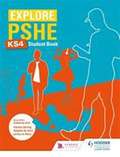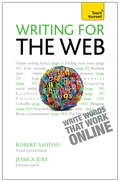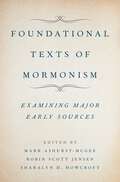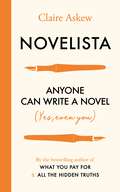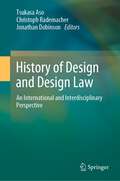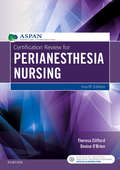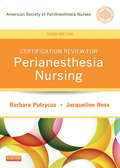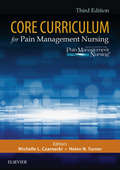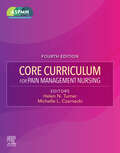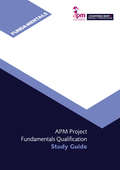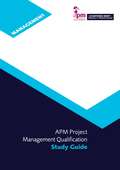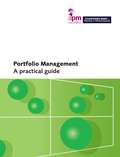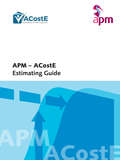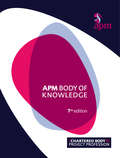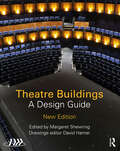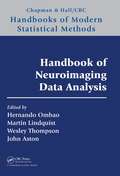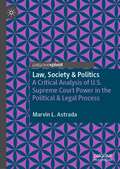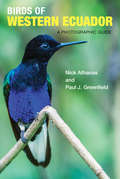- Table View
- List View
Explore PSHE for Key Stage 4 Student Book
by Philip AshtonDevelop your students' skills and understanding of PSHE and encourage an active learning approach, all whilst providing essential coverage of the 2020 statutory guidelines.The flexible design of this KS4 student book is compatible with whichever way your school delivers PSHE. User-friendly for both experienced PSHE Leads and for non-specialist teachers, it is packed full lesson outcomes and starter sections, as well as lot of activities students can get involved in.- Provide the right level of knowledge and understanding of PSHE education pupils need with this KS4 Student Book that has topic suitability for this age range.- Learning outcomes at the start of every lesson, along with a short activity to introduce students to the topic and get them thinking provides an easy way in to every lesson - Source-based activities support an activity-based learning scheme that is accessible to students of all abilities
Writing for the Web: Teach Yourself Ebook (Teach Yourself)
by Robert Ashton Jessica JubyLike it or not, the internet has become integral to every aspect of our lives, with smart phones, tablet computers and wifi enabling us to communicate easily and instantly.Whether you're a rising star in the corporate world or a silver surfer, to make an impactonline you have to be able to write clearly, convincingly and in a way that emphasisesyour character too. Best-selling business author Robert Ashton and internet native JessJuby will help you communicate more objectively and effectively online, both at work andat home.
Foundational Texts of Mormonism
by Mark Ashurst-McGee Robin Jensen Sharalyn D. HowcroftJoseph Smith, founding prophet and martyr of the Church of Jesus Christ of Latter-day Saints, personally wrote, dictated, or commissioned thousands of documents. Among these are several highly significant sources that scholars have used over and over again in their attempts to reconstruct the founding era of Mormonism, usually by focusing solely on content, without a deep appreciation for how and why a document was produced. This book offers case studies of the sources most often used by historians of the early Mormon experience. Each chapter takes a particular document as its primary subject, considering the production of a document as an historical event in itself, with its own background, purpose, circumstances, and consequences. The documents are examined not merely as sources of information but as artifacts that reflect aspects of the general culture and particular circumstances in which they were created. This book will help historians working in the founding era of Mormonism gain a more solid grounding in the period's documentary record by supplying important information on major primary sources.
Novelista: Anyone can write a novel. Yes, even you.
by Claire AskewNOVELISTA is a friendly, straight-talking writing guide for people who want to write a novel but don't know how to begin. It asks all the important questions and gives a host of reassuring answers that demonstrate that anyone can write a novel - even you!To begin with, what the hell is a novel? It's basically a tiny world, where characters are born, live, and (sometimes) die. To write one all you need is a notebook and a pen - but along the way you'll want to learn about good writing habits, planning, mastering descriptions and dialogue and how to pull it all together. This book will guide you through the process and orient you towards the goal of publication.From absolute beginner to novelista, this book will change the way you write and think about writing.
Maths for Mums and Dads: The Teenage Years
by Mike Askew Rob EastawayIn a new edition, fully revised and updated to reflect key new curriculum topics and methods, Maths for Mums and Dads guides you through the basics of primary school maths and covers the dilemmas and problems you are likely to be confronted with, including:* number bonds, place value and decimals* long multiplication and division * fractions, percentages and decimals* basic geometry, shapes, symmetry and angles* data-handling, combinations and chanceComplete with sample questions, mock exam papers and examples of children's errors, Maths for Mums and Dads will challenge and reassure in equal measure.
More Maths for Mums and Dads: The Teenage Years
by Mike Askew Rob EastawayIn their first, bestselling, book Maths for Mums and Dads Rob Eastaway and Mike Askew helped you and your child make sense of the new methods and topics covered in primary school maths.But as your child embarks on secondary school, two new issues arise. First, in the build-up to GCSE, school children begin to do maths that you probably have never encountered before – or if you have, you never really got it in the first place, and have long since forgotten. Factorising? Finding the locus?Solving for x? Probability distributions? What do these even mean?More Maths for Mums and Dads gives you all the ammunition to help you to help your teenager get to grips with and feel more confident about – and hopefully even enjoy – GCSE maths. It covers in straightforward and easy-to-follow terms the maths your child will encounter in the build up to GCSE, in many cases gives practical and fun examples of where the maths crops up in the real world. In addition, the authors introduce the notion of estimation and coin a new term, Zequals. Using the Zequals method will help develop your teenager's feel for numbers, which in turn could transform their experience and enjoyment of everyday maths.
History of Design and Design Law: An International and Interdisciplinary Perspective
by Tsukasa Aso Christoph Rademacher Jonathan DobinsonFor the first time, this book provides an up-to-date history of product design and product design law covering 17 countries — Japan, Korea, China, Singapore, the United Kingdom, Germany, France, Italy, the Nordic countries (Denmark, Finland, Iceland, Norway and Sweden), Russia, the United States, Brazil and Australia — selected for their innovative or influential approach to design or design protection.Each country is the subject of two chapters — one on the history of design and the other on the history of design law — authored by experts in design and intellectual property (IP) law. This unique interdisciplinary approach explains why and how various national design protection systems (that can include design, copyright, trade mark, competition and civil laws) developed, making it an ideal book for students, researchers and lawyers. The book also serves as an international survey of different national policy and legal responses to historical developments and specific design and legal issues allowing readers to consider their advantages and disadvantages — and so is also recommended for policy and law makers, as well as organizations that administer IP rights. Topics include the subject matter of design protection; procedural and substantive requirements; design registration; infringement; and the overlap of design rights and other IP rights. The chapters on design history provide further context to the historical development of these legal concepts by considering major design movements, key designers and iconic designs and the current state of design. The chapters highlight the connected and often complementary relationship between the two histories, not only for each country, but at the regional and international level, often as a result of government policies, trade, colonialism, immigration and globalisation. Design and design practice continue to become more global and evolve with developments in technology. At the same time, design laws are not internationally harmonized and continue to develop at the national level, with a number of significant changes occurring in recent years. This timely book shows how the lessons of the past continue to inform the future direction of design and the legal systems developed to protect it.
Certification Review for PeriAnesthesia Nursing - E-Book
by ASPAN Theresa Clifford Denise O'BrienPrepare for your CPAN® or CAPA® exam with the only question-based review of perianesthesia nursing! Certification Review for Perianesthesia Nursing, 4th Edition is written by the American Society of PeriAnesthesia Nurses (ASPAN) — the leading organization for perianesthesia nursing education, research, and practice standards. A total of more than 650 multiple-choice review questions includes case study and clinical application questions, answers, detailed rationales, references to current literature, and an interactive online Review Tool that includes 175 additional questions to use for practice! Edited by Theresa Clifford and Denise O'Brien, this ASPAN review is the most effective way to prepare for your certification exam in hospital postanesthesia or ambulatory perianesthesia nursing.Exam-based organization of questions mirrors that of the CPAN and CAPA exams, covering the four core subject areas: physiological, cognitive/behavioral, safety, and patient advocacy.Case study and clinical application questions reflect the style of the questions on the actual certification exams, allowing you to prepare for these types of questions and practice clinical reasoning.Detailed rationales for each question help you understand why certain answer options are better than others.References for each question show where to find and verify the latest standards of practice.Essential perianesthesia nursing concepts are identified and tied to the corresponding chapter in the Core Curriculum. NEW! More than 650 brand-new review questions include answers and rationales, and reflect current evidence and standards of practice, so you can prepare effectively for the newest exam and deliver the best possible nursing care for patients who undergo sedation, analgesia, and anesthesia. NEW! An additional 175 review questions in the online Review Tool offer practice with timed test taking. UPDATED review content is organized to match the content of ASPAN’s PeriAnesthesia Nursing Core Curriculum and incorporates the test blueprints of ABPANC (the American Board of Perianesthesia Nursing Certification).
Certification Review for PeriAnesthesia Nursing - E-Book
by ASPAN Barbara Putrycus Jacqueline RossThe only question-based CAPA and CPAN exam review available, Certification Review for PeriAnesthesia Nursing, 3rd Edition is written by the American Society of PeriAnesthesia Nurses (ASPAN) -- the leading organization for perianesthesia nursing education, practice, standards and research. A total of 600 multiple-choice review questions includes case study and clinical application questions, answers, comprehensive rationales, and references to current research. Questions are updated to reflect the latest standards of practice and ABPANC's examination blueprints. From Barbara Putrycus and Jacqueline Ross, this ASPAN practice tool helps you review the core knowledge and essential skills you need for in-hospital or ambulatory certification. It has come to our attention that that there are errors in the 3rd edition of ASPAN/Putrycus/Ross: Certification Review for Perianesthesia Nursing. Those errors have now been corrected. Please contact Customer Service at 1-800-545-2522 and mention part number 9996090566 to receive the corrections. We sincerely apologize for any problems this may have caused.UNIQUE! Review is based on the latest CPAN and CAPA examination blueprints, preparing you for the four core areas of knowledge tested: physiological, behavioral and cognitive, safety, and patient advocacy. Essential core concepts and cross references to ASPAN's PeriAnesthesia Nursing Core Curriculum, 2nd Edition, are listed in the beginning of each chapter. Case study and clinical application questions include answers, correct answer rationales, and individual rationale references for each question. Chapters are broken into sets, with at least 20 multiple-choice questions included in each set. Convenient index is organized by question number rather than page number. Questions are revised or completely new to reflect the latest standards of practice and ABPANC's examination blueprints. Updated rationales and references are provided. New format features answers and rationales after each set of questions and also provides an answer key for all chapters at the end of the book. A chapter outline is included at the beginning of every chapter, and thumb tabs help you navigate more easily through the book.
PeriAnesthesia Nursing Core Curriculum E-Book: Preprocedure, Phase I and Phase II PACU Nursing
by ASPAN Lois Schick Pamela E WindlePrepare to succeed on the CPAN® and CAPA® exams with this authoritative guide from ASPAN! PeriAnesthesia Nursing Core Curriculum, 3rd Edition is a comprehensive reference that helps you care for patients before and after anesthesia in all types of settings. There’s no other review like it. Coverage of the full scope of perianesthesia nursing makes it an ideal resource for both in-hospital and ambulatory care. And to keep you current, this edition also describes the newest advances in interventional radiology, robotics, and endoscopy procedures. Written by the American Society of PeriAnesthesia Nurses and edited by respected perianesthesia nurses Lois Schick and Pam Windle, this book will help you develop the skills and expertise you need to excel on your certification exam and in practice.Authoritative ASPAN authors cover the core content necessary to demonstrate competency as a perianesthesia nurse, including ASPAN’s full scope of practice for the CPAN® and CAPA® certifications.Six sections cover required competencies in these key areas of perianesthesia nursing: professional issues, preoperative assessment, patient care across the life span, perianesthesia, body systems, and education and discharge.Easy-to-use outline format provides a quick review of the fundamentals and standards of practice for patient assessment and care.Objectives at the beginning of each chapter help you focus on and learn key content.Numerous boxes, tables, and illustrations highlight important information and make the book a valuable reference.Preoperative Assessment Competencies section addresses all aspects of the complete assessment of the patient and family, including areas such as transcultural nursing and alternative therapies as well as the mentally and physically challenged patient.Life Span Considerations section prepares you for the care of patients of all ages with chapters on pediatric, adolescent, adult, and geriatric patients.Useful appendixes cover the CPAN and CAPA certification programs and provide test-taking strategies, helping you to prepare for and pass your exam.A bibliography at the end of every chapter lists additional research resources. NEW content covers interventional radiology, robotics, endoscopy procedures, and the latest technology as it impacts perianesthesia nurses.NEW! Streamlined chapters provide a more concise book.UPDATED Professional Competencies section includes the latest safety, regulatory, and healthcare policies.UPDATED Education and Discharge Competencies section addresses the changes in ambulatory settings and patient discharges.
PeriAnesthesia Nursing Core Curriculum E-Book: Preprocedure, Phase I and Phase II PACU Nursing
by ASPAN Lois Schick Pamela E WindlePrepare to succeed on the CPAN® and CAPA® exams with this authoritative guide from ASPAN! PeriAnesthesia Nursing Core Curriculum, 4th Edition is a comprehensive reference that helps you care for patients before and after anesthesia in all types of settings. Coverage of the full scope of perianesthesia nursing makes it an ideal resource for both inpatient and outpatient care. To keep you current on the many facets of perianesthesia, this edition also describes the newest advances in interventional radiology, robotics, and endoscopy procedures. Written by the American Society of PeriAnesthesia Nurses (ASPAN) and edited by respected perianesthesia nurses Lois Schick and Pam Windle, this book will help you build the skills and expertise you need to excel on your certification exam and in practice.Perianesthesia Complications chapter now appears after the System Competencies section to quickly display complications for all system competencies in one spot to help you find this vital information easily.System Competencies chapters have been updated to focus on specific, non-redundant topics to help you grasp key points right away.UPDATED! Certification of Perianesthesia Nurses and Testing Concepts and Strategies appendicies provide helpful tools for CPAN® or CAPA® certification to assist you to prepare for these exams.This authoritative guide written by ASPAN covers the full scope of perianesthesia practice to help you prepare to succeed in practice and on the CPAN® and CAPA® exams.Easy-to-use outline format serves as a quick review and reference. Objectives at the beginning of each chapter focus on key content to allow you to use the book more effectively.Plentiful boxes, tables and illustrations highlight important references to ensure you get the most out of the book’s mutifaceted topics.A bibliography at the end of every chapter provides additional resources to make it easy for you to research at an in-depth level.NEW! Two-color and two-column design arranges information logically to help you quickly find key information.NEW! Content on enhanced recovery after surgery (ERAS), gender diversity, DNR/DNAR/DNI, and the drug Bridion® (sugammadex) showcases a wide variety of important topics to help you gain a deep understanding of the spectrum of perianesthesia.NEW! Updated content reflects changes in the ASPAN Core Curriculum as well as CPAN® and CAPA® testing to ensure you stay current in perianesthesia in the classroom and in clinicals.
Core Curriculum for Pain Management Nursing - E-Book
by ASPMNLearn how to successfully work with patients in pain with The Core Curriculum for Pain Management Nursing, 3rd Edition. Written by the American Society for Pain Management Nursing (the primary nursing organization in pain management), this easy-to-read text covers the entire scope of pain management in a very user-friendly outline format. This new edition has been thoroughly updated to reflect the latest standards and scope of practice put forth by the ASPMN. Yet, it still retains its strong nursing focus as it explores the nurse’s role as a patient advocate in pain management and how that role changes from a Registered Nurse to a Clinical Nurse Specialist to a Nurse Practitioner. Both pharmacologic and non-pharmacologic methods of pain management are discussed, as is a wide variety of patient subsets beyond the traditional pediatric, adult, and geriatric patient. If you’re looking to pass the ASPMN credentialing exam and work successfully with all types of patients in pain, then this is the perfect text for you! Content written by the ASPMN (American Society for Pain Management Nursing), the primary nursing organization in pain management, ensures the material is authoritative and timely.UNIQUE! Expansive patient coverage addresses not only adults, pediatric and geriatric patients, but also key subsets of patients — such as those who have concomitant addiction, those who have cancer, those who are under sedation for a procedure, and more.Comprehensive coverage discusses important topics — such as the disparities in pain management, gender differences in pain and analgesia, the effect of depression on pain perception and management, the use of research, various theories of pain management, and more — to fully prepare you for your ASPMN credentialing exam and professional practice. UNIQUE! Strong nursing focus thoroughly explores the nurse’s role as a patient advocate in pain management and how that role changes from a Registered Nurse to a Clinical Nurse Specialist to a Nurse Practitioner. Unique outline format makes the text an accessible and easy-to-read reference.NEW! Coverage of both pharmacologic and non-pharmacologic pain interventions has been updated to keep you abreast of the latest methods for both types of pain management.NEW! Thoroughly updated information reflects the latest standards and scope of practice as well as the blueprint for the ASPMN credentialing exam.NEW! Additional information on pain management in bariatric patients highlight important considerations that you need to know when caring for this specific patient population.NEW! Added illustrations and figures throughout the text make difficult concepts easier to understand.
Core Curriculum for Pain Management Nursing - E-Book
by ASPMNPrepare for the nurse’s role in assessing and managing pain! Core Curriculum for Pain Management Nursing, 4th Edition uses an easy-to-read outline format to cover the entire scope of pain management. Written by the American Society of Pain Management Nurses (ASPMN®, the leading nursing organization in pain management), this review begins with foundational concepts and follows with guidelines and tools for effective pain assessment. Coverage of evidence-based pain management strategies and therapies is included for all patient types and ages. Updated to reflect current best practices in nursing, this book provides an excellent review for the ASPMN® pain management certification exam and the RN-BC credentialing exam.Content written by ASPMN® ensures that information includes the latest in education, research, standards, and practice, as well as a thorough review for the ASPMN® certification exam and the RN-BC credentialing exam..Both pharmacologic and non-pharmacologic methods of pain management are described.Comprehensive coverage includes adult, pediatric, and geriatric patients along with key subsets of patients such as those who have concomitant addiction, those who have cancer, and those who are under sedation for a procedure.Wide-ranging content includes disparities in pain management, the roles of the clinical nurse specialist as well as the nurse practitioner, theories of pain management, the use of research, gender differences in how men and women respond to pain and analgesia, and the effect of depression on pain perception and management.Strong nursing focus provides guidelines for the nurse’s role in pain management and in improving the quality of patient care.Easy-to-read outline format makes this book a quick and accessible reference.NEW! Updated content includes the latest changes in clinical practice including pharmacologic and non-pharmacologic pain interventions, integrative and complementary therapies, and the current ANA scope and standards of practice.NEW! Revised chapters include Mental Health Disorders and Pain and Managing Pain in the Context of Substance Use Disorder.NEW! Cannabis Use in Pain Management chapter is added to this edition.NEW! Reorganized content better highlights the complexity of assessment and management of pain.NEW two-color design, illustrations, and summary tables are added throughout the book, making difficult concepts easier to understand and remember.
APM Project Fundamentals Qualification (PFQ) Study Guide (7th edition)
by Association for Project ManagementPrepare for your PFQ exam in three simple steps with APM's Project Fundamentals Qualification Study Guide. Chapter 1, Study planning, provides helpful tips and advice to get you started and to manage your time effectively. Chapter 2, Study areas, covers the core project management subjects that make up the PFQ exam syllabus. Chapter 3, Self-assessment, gives you the chance to test your knowledge with a series of quick quizzes. Key benefits: 15 study areas mapped to each learning outcome from the PFQ syllabus (and aligned to the APM Body of Knowledge 7th edition). A pull-out PFQ study guide planner to help you plan your study and monitor your progress. Over 200 short quiz questions and a comprehensive glossary of APM project management terms. Readers of this publication may also be interested the APM Body of Knowledge 7th edition
APM Project Management Qualification (PMQ) Study Guide (7th edition)
by Association for Project ManagementPrepare for your PMQ exam in three simple steps with APM's Project Management Qualification Study Guide. Chapter 1, Study planning, provides helpful tips and advice to get you started and to manage your time effectively. Chapter 2, Study areas, covers the core project management subjects that make up the PMQ exam syllabus. Chapter 3, Self-assessment, gives you the chance to test your knowledge with a series of quick quizzes. Key benefits: 20 study areas mapped to each learning outcome from the PMQ syllabus (and aligned to the APM Body of Knowledge 7th edition). A pull-out PMQ study guide planner to help you plan your study and monitor your progress. Over 200 short quiz questions and a comprehensive glossary of APM project management terms. Readers of this publication may also be interested the APM Body of Knowledge 7th edition
APM Salary and Market Trends Survey 2021
by Association for Project ManagementOur Salary and Market Trends Survey took place in November 2020 against a backdrop that few could have predicted 12 months before. Working with YouGov, the survey captured not only the facts and figures shaping the project profession, but also created a snapshot of a profession dealing with the impact of a global pandemic. We are able to better understand how the longer-term trends of a younger, more diverse profession were combining with the short-term shock brought about by coronavirus. The result is a useful picture of a profession holding steady in the face of some serious adversity. For most the impact has not been as bad as some may have feared and that the profession as a whole remains optimistic about its ability to navigate a difficult time. While expectations for growth may have been tempered, a strong sense of resilience and steadfastness shines through the 2,626 responses. Please note, whole numbers are used for the report, so some figures may not add up to 100 per cent due to rounding. The median has been used as the average for salaries, unless stated.
Portfolio Management – A practical guide
by Association for Project ManagementThis guide illustrates how portfolio management is a key mechanism in enabling an organisation to optimise delivery of its strategic goals, maximising value, and do so in the required time frame. The guide is designed to serve three main aims: to promote awareness of, and outline good practice in, portfolio management for the practising or developing portfolio manager or portfolio office manager. All organisations can learn from each other, but ultimately each needs to build its own version of portfolio management practice that addresses their own business need; to provide a benchmark for portfolio managers and the portfolio management community to assess their own organisation’s maturity in the discipline; to stimulate new thinking and contribute to the development of portfolio management practice.
APM – ACostE Estimating Guide
by Association for Project Management Association of Cost EngineersEverything you need to know about estimating in one essential guide. Estimates are critical to project professionals; vital when making informed decisions about projects across the different stages of the entire project life cycle to ensure successful project delivery. A cooperation between the Association for Project Management (APM) and the Association of Cost Engineers (ACostE) this guide is vital for project professionals across various sectors, as well as anyone who needs to understand cost estimation. Created by collaborators with real-life experiences, Estimating Cost will help you understand and diligently apply the core values of estimating cost to improve the clarity and robustness of an estimate for better decision making. Key features include: * practical advice with a focus on cost estimating approaches, such as top-down, bottom-up, and ‘ethereal’; * guidance on the various estimating methods including analogy, parametric and trusted source; * applicability to the private sector and on a wide range of projects; * key figures, diagrams and frameworks you can build on and apply to your estimates.
A guide to using a benefits management framework: Improve organisational capability by ensuring the right projects support your strategic objectives
by Association for Project Management Minney H Parris S."Very few people have experience of creating benefits management frameworks at an organisational level from scratch. This guide is written by people who do..." Dr Hugo Minney and Sarah Parris, with the APM Benefits and Value SIG, explain the process of creating and embedding a benefits framework in an organisation. In doing so they show how a framework will standardise how benefits are managed across projects, programmes and portfolios, and how you can align project benefits to strategic objectives and KPIs. They also provide valuable insights, including the best tools, templates and techniques, the likely challenges and obstacles to success and examples of frameworks that work. Instructive and insightful, this guide puts benefits at the heart of your organisation. "The guide develops an understanding of the need for benefits realisation, offering a framework for addressing contextual factors and developing the capability to realise benefits."
APM Body of Knowledge
by Association for Project Management StaffThe APM Body of Knowledge is a foundational resource, providing the concepts, functions and activities that make up professional project management. It seeks to reflect the developing profession, recognising project-based working at all levels, and across all sectors for influencers, decision makers, project professionals and their teams. Key features include: An extended life cycle structure from the strategic case for projects to the delivery of benefits. An expanse of topics covering iterative and linear life cycles, personal wellbeing, PMOs and other strategic functions. Over 200 recommended reading materials, including APM publications, that professionals can use to expand their knowledge. A comprehensive glossary of key terminology that run throughout the book, from topic to topic. “As a foundational resource, written by the profession for the profession, we hope you find the content informative and useful in guiding your endeavours to deliver beneficial change through the management of projects, programmes and portfolios.” Dr Ruth Murray-Webster, editor, APM Body of Knowledge 7th edition Readers of this publication may also be interested in the Directing Change, Planning, Scheduling, Monitoring and Control and Sponsoring Change
Theatre Buildings: A Design Guide
by Association of British Theatre Technicians (ABTT) Margaret ShewringIn 2021, its Diamond Jubilee year, the Association of British Theatre Technicians (ABTT) undertook to revise Theatre Buildings: A Design Guide (Routledge, 2010). This new edition (Routledge, 2023) has substantially re-written text with fresh images and entirely new reference projects, providing essential guidance for all those engaged in the design of theatre buildings. Edited by Margaret Shewring (Emeritus Reader, University of Warwick, former Director of the Postgraduate Diploma and MA in Theatre Consultancy), this new publication is written by a team of international experts, architects, theatre consultants, acousticians, engineers and industry professionals led by Tim Foster (Foster Wilson Size) and Robin Townley (CEO of the ABTT). It provides an invaluable resource for those looking to build, remodel or conserve theatre buildings, taking into account the significant changes which have taken place in the last twelve years in all aspects of theatre design and technical practice. It locates those changes in the wider context of the need for sustainability in the theatre industry in response to the climate emergency, inclusivity, diversity of access, placemaking and concerns for health and wellbeing. This new edition provides guidance for anyone who seeks inspiration and encouragement to create or improve a place of entertainment or who seeks to understand what might be required to accommodate an audience for the presentation of live performance and the successful use, operation and organisation of such a venue. Its generous format and the thirty-two new reference projects, more than 260 high-resolution colour images and 175 diagrams and specially commissioned plans make it accessible and informative both to the general reader and the professional specialist.
Handbook of Neuroimaging Data Analysis (Chapman & Hall/CRC Handbooks of Modern Statistical Methods)
by John Aston Hernando Ombao Martin Lindquist Wesley ThompsonThis book explores various state-of-the-art aspects behind the statistical analysis of neuroimaging data. It examines the development of novel statistical approaches to model brain data. Designed for researchers in statistics, biostatistics, computer science, cognitive science, computer engineering, biomedical engineering, applied mathematics, physics, and radiology, the book can also be used as a textbook for graduate-level courses in statistics and biostatistics or as a self-study reference for Ph.D. students in statistics, biostatistics, psychology, neuroscience, and computer science.
What Men with Asperger Syndrome Want to Know About Women, Dating and Relationships
by Maxine AstonMany Asperger men are confused and bewildered by women, dating and relationships and find it hard to know how to get it right. This practical handbook provides many of the answers to their key questions about women and dating, helping them to understand how to have successful relationships.
Law, Society & Politics: A Critical Analysis of U.S. Supreme Court Power in the Political & Legal Process
by Marvin L. AstradaThis book explores critical questions pertaining to the character and content of the “American People” as posited in the US Supreme Court’s interpretation of the fundamental law. What exactly is an American? Who or what comprise the People? What are the constitutive sociocultural, political, and economic ordering principles of the American People and society? How does the Court impact the nationalist character and content of law and policy? From a sociocultural, economic, political, and ideological perspective, the Court’s singular proclamations as to what the US Constitution means, what is its purpose, and how it is to be perceived and implemented have profound consequences for representational politics and notions of what exactly constitutes the American polity. This book employs a critical, conceptual, and structural approach, critically examining the notion of the People in constitutional discourse, and its impact on government, politics, law, and society in the present.
Birds of Western Ecuador: A Photographic Guide (PDF)
by Nick Athanas Paul J. Greenfield Iain Campbell Pablo Cervantes Daza Andrew Spencer Sam WoodsWestern Ecuador is famed for its astonishingly diverse birdlife, from colorful hummingbirds and outrageous toucans to more difficult groups like raptors, flycatchers, and ovenbirds. Here is the ultimate photographic guide to the spectacular birds of this region. Featuring nearly 1,500 stunning color photos of 946 species, this richly detailed and taxonomically sophisticated field guide will help you with even the toughest identification challenges. Species accounts, photos, and color distribution maps appear side by side, making it easier than ever to find what you are looking for, whether you are in the field or preparing for your trip.Features nearly 1,500 photos of 946 speciesIncludes facing-page species accounts, photos, and mapsProvides photos of multiple plumages for many speciesHelps you to differentiate between similar species
